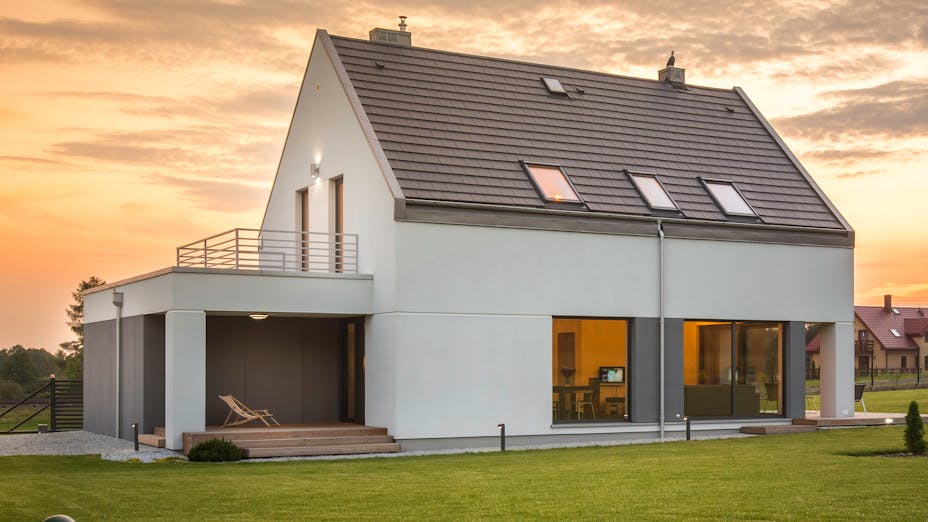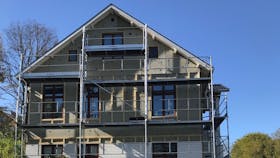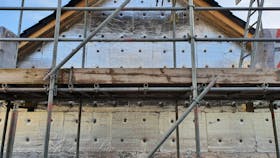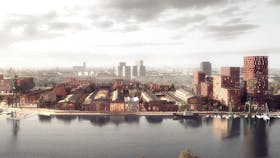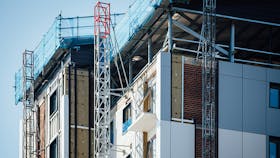Although the decision to renovate a home is a deeply personal one, it may also be just what the world needs right now. Some of the reasons a homeowner may decide to start a project include improving the property’s value, providing more convenience to the occupants, or updating the structure’s safety features. It is also an opportunity to increase their home’s energy efficiency, help the environment, and to save money on their utility bills. No matter what the initial reasoning may be, owners should understand what sustainable home renovation solutions are available to them before starting the project.
More people now live in urban environments, and forecasts suggest this number will continue to grow. By 2050, the European Commission expects about 68 percent of the world’s population will be living in cities. In another 50 years, 85 percent (or roughly 9 billion people) will have to coexist in densely populated areas.
Considering the myriad of challenges these cities will face, every house or apartment building can be a positive multiplier in achieving the United Nations’ Sustainable Development Goals (SDGs). SDG 7.3 requires cities around the world to double the rate of improvement for energy efficiency by 2030, while SDG 12.2 promotes the sustainable management and efficient use of natural resources.
Home remodel and renovation projects can help achieve a sustainable future
The world’s building stock is getting older. In the United States, the average median age of houses is 37 years while in Europe, almost half of all residential structures date back to before 1970. The best practices and regulations that governed the construction of these buildings did not account for future sustainability or energy efficiency, which is now more relevant than ever before. For this reason, renovating aging building stock is a viable strategy for energy saving and reducing the impact on the environment through increased energy efficiency.
European buildings account for 40 percent of all energy consumption, 36 percent of CO2 emissions, and 55 percent of the electricity used in the region. As part of the European Union’s sustainability targets, the region should aim to improve its energy efficiency by 20 percent in 2020 and 27 percent in 2030. Renovating the existing building stock can help achieve these targets by using sustainable technologies and building materials.
Not only will adopting these sustainable home renovation solutions reduce the environmental impact on the planet, but it will also help owners with saving money on energy costs. The current renovation rate of homes and buildings in Europe is roughly 1.2 percent. Addressing the energy needs of the future will require this rate to increase to between 2 and 3 percent per year in the future. For homeowners looking to remodel a property or renovate their home, using the latest eco-friendly solutions and energy-efficient technologies bring a range of benefits to both the environment and their budget.
Conducting an energy audit before you start renovating your home
Some of the older building materials used in the construction of homes may not be environmentally friendly. What is worse is that the energy efficiency of these structures was not a primary concern for specifiers when they designed these older buildings. The culture of waste and infinite consumption rightfully gave way to more responsible practices. Developers and renovators now have access to sustainable building materials that allow them to improve a building’s energy efficiency. Modern materials also use fewer virgin resources and reduce waste going into landfills, as some of them are highly recyclable.
Before starting a renovation project, owners should conduct an energy efficiency audit. This will indicate what their energy profile is and where opportunities to gain savings currently exist. The EU requires large enterprises to conduct energy efficiency audits. Even if it is not required for homeowners, they can benefit in the long-term by evaluating their property’s efficiencies. This will enable them to determine the levels of investment required to reduce waste and improve efficiency while helping them save on monthly bills in the future.
The main steps involved in an energy efficiency audit will include:
- Reviewing the efficacy of the insulation used throughout the building.
- Identifying any air leaks in the home.
- Determining the heat retention properties of the windows and doors.
- Finding any energy vampires (appliances that consume energy even when not in use) in the house.
Once the owners identify these inefficient systems and materials, they can develop a plan that will help them remodel or renovate the building towards a green home. As most homes in Europe will only undergo a renovation project once before 2050, these projects need to utilize the latest technologies that improve energy efficiency for the future.
Technologies that make sustainable home renovations possible
The first thing every homeowner should consider before starting a renovation project is the thermal efficiency of their home’s insulation materials. The majority of thermal loss in any building occurs through the roof of the structure. Inefficient materials require more energy to maintain a comfortable climate inside the building.
Modern high-quality insulation materials are recyclable and non-combustible. With a healthy and well-insulated building envelope, owners can increase their property’s thermal efficiencies. Insulating the ceilings, floors, and walls will improve the safety of the occupants while limiting the influence of cold or hot temperatures from the external climate.
After ensuring the insulation in the house is sound, owners should look to replace their appliances with energy-efficient devices. Different regions have different ratings for appliances. The United States uses Energy Star ratings, while in Europe, the Energy Label rating will indicate an appliance’s energy efficiency. These appliances require less energy when in use and during standby, reducing the total electricity consumed in the house.
Additionally, owners should try to use locally sourced materials and suppliers. The closer the source of the product or solution is to the home, the smaller the overall impact it will have on the environment is likely to be.
Insulating the water supply system may further improve the home’s thermal efficiencies. Water heaters use a lot of energy in the home, so ensuring the most efficient system is used will do wonders for energy efficiency.
Using home renovation projects to build a sustainable future
Renovating the world’s building stocks presents a significant opportunity for achieving the United Nation’s sustainable goals of the future. More than any other pathway, reducing the amount of wasted energy in existing structures can alleviate the burden that humanity’s consumption places on the environment and reduce global CO2 emissions. The UN identified deep renovation as a cost-effective method for achieving the required low-carbon 2 degrees Celsius scenario.
It is understandable for owners to want to install gadgets and smart sensors in their homes that will improve their convenience and comfort. However, if the basic technologies like high-quality insulation do not form part of the project, it will be a missed opportunity for improving its thermal efficiency, reducing energy consumption, and limiting the CO2 emissions originating from their homes. To address the climate challenges societies currently face, owners need to look towards adopting sustainable home renovation solutions.
